The present farming sector has to address two core problems: proper agricultural waste management and sustenance of crop production. One clever way of counteracting these challenges is using chicken manure as a fertilizer, turning it into an organic fertilizer. This saves the environment from being polluted by the crude ways of disposing of chicken poop and, in turn, improves soil fertility and harvest returns. This article will detail how to change chicken manure to valuable organic fertilizers. We seek, through demonstrating various benefits, approaches, and considerations involved in such change, a comprehensive technical manual for farmers and other practitioners that would help them to enhance their solid waste disposal systems as well as harvest outcomes.
What is Chicken Manure Fertilizer?
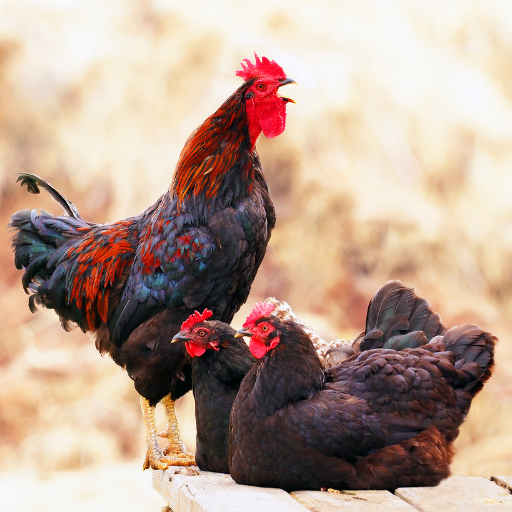
Chicken manure fertilizer is an organic soil amendment derived from the excrement of chickens. Rich in essential nutrients such as nitrogen, phosphorus, and potassium significantly improves soil fertility and structure. The high nitrogen content in chicken manure makes it particularly effective for promoting plant vegetative growth. Unlike synthetic fertilizers, chicken manure adds organic matter to the soil, enhancing its aeration, water retention, and microbial activity. However, raw chicken manure should be composted or processed to stabilize its nutrient content and eliminate pathogens before crop application, ensuring safe and effective use in agriculture.
Benefits of Using Chicken Manure as Fertilizer
Chicken manure offers numerous agronomic and environmental benefits when used as a fertilizer. Firstly, its high nutrient content supports robust plant growth, with typical parameters including nitrogen (N) at 1.5-2.0%, phosphorus (P2O5) at 1.0-1.5%, and potassium (K2O) at 0.5-1.0%. These values can vary based on factors such as diet and processing methods, but they generally provide a balanced nutrient profile essential for crop development.
Secondly, chicken manure enhances soil health by increasing organic matter, which improves soil structure, aeration, and water retention capabilities. This organic matter also fosters microbial activity, which is crucial for nutrient cycling and disease suppression in soil ecosystems.
Additionally, the use of chicken manure can reduce the dependency on synthetic fertilizers, thereby decreasing the carbon footprint and lowering production costs for farmers. It also aids in mitigating environmental issues associated with raw manure disposal, such as nutrient runoff and groundwater contamination. Properly composted or processed chicken manure eliminates harmful pathogens and reduces odours, making it safer for handling and application.
In summary, chicken manure is a potent, sustainable soil amendment that supports plant health, enhances soil properties, and promotes environmental sustainability.
Nutrient Composition of Chicken Manure
Chicken manure comprises several essential nutrients vital for plant growth, each in specific concentrations. The primary macronutrients—in particular nitrogen, phosphorus, and potassium—are present in significant amounts: nitrogen (N) at approximately 1.5-2.0%, phosphorus (P2O5) ranging from 1.0-1.5%, and potassium (K2O) at 0.5-1.0%. These values fluctuate depending on the chickens’ diet and manure processing techniques.
In addition to these macronutrients, chicken manure also contains secondary nutrients such as calcium (Ca) and magnesium (Mg), and micronutrients like zinc (Zn), copper (Cu), and manganese (Mn), all of which are significant for various plant metabolic processes. Typically, chicken manure provides calcium at about 1.5-2.5% and magnesium at around 0.3-0.4%. The micronutrient concentrations are generally in the parts per million (ppm) range, with values like zinc (Zn) at 100-400 ppm, copper (Cu) at 20-200 ppm, and manganese (Mn) at 100-300 ppm.
The organic matter content in chicken manure ranges between 40-60%, crucial for improving soil structure and enhancing microbial activity. Moreover, the manure has a C:N (carbon to nitrogen) ratio of approximately 8:1 to 13:1, which supports rapid decomposition and nutrient release.
In conclusion, the nutrient composition of chicken manure makes it an effective and comprehensive fertilizer, providing a diverse range of nutrients and benefiting soil health and crop growth.
Comparing Chicken Manure with Other Animal Manure
- Nutrient Content:
- Nitrogen (N): Chicken manure usually has 1.5-2.0%, cow manure about 0.5-1.0%, and horse manure roughly 0.6-0.8%.
- Phosphorus (P2O5): Chicken manure normally supplies 1.0-1.5%, whereas cow manure provides about 0.2-0.5% and horse manure approximately 0.3-0.6%.
- Potassium (K2O): Chicken manure normally ranges between 0.5-1.0% while cow manure is about 0.4-07%, and horse manure is something close to that.
- Secondary Nutrients and Micronutrients:
- High levels of secondary nutrients, calcium at about (1:50 to 2:50)% and magnesium at around (zero point three percent) could be found in chicken waste, but its rival, cow dung, contains calcium levels ranging from just over one percent to one point five percent whilst having a lower level of magnesium content between zero point zero one and zero point three percent Horse Manure similarly contains very similar concentrations though slightly lower
- Regarding micronutrients, chicken droppings contain more of them than cattle or horse droppings. For example, the quantity of zinc varies from one hundred up to four hundred parts per million, copper averages from twenty to two hundred parts per million, and manganese starts from one hundred ppm up to three hundred.
- Organic Matter:
- Chicken dung also contains high percentages of organic matter which increases soil structures as well as microbial activities at rates such as forty up to sixty percent, when compared with cow’s waste, whose figures range between thirty percent and fifty percent for horses
- C:N Ratio:
- The carbon-to-nitrogen ratio in chicken muck allows it to decompose rapidly because it is between eight and eight times greater than twelve or thirteen to one; cow manure takes longer for nutrients to be available because it is 20:1- 25:1.; horse manure is similar in this regard, with c:n ratios ranging from 25:1 to 30:1
What are Different Forms of Chicken Manure Fertilizer?
- Fresh Dung: This is the raw form of fowl movements collected directly from the poultry farm. It is rich in nutrients, but due to its high ammonia content, it may need composting, as it could prove harmful to plants if used as such.
- Mothered Manure: This type results due to decomposition processes where raw feces are blended with organic materials and allowed to decompose slowly over time. Compost manure has stable nutrients, a low amount of illness-causing agents, and reduced smell; thus, it is safer for use in direct applications.
- Pelleted Fertilizer: The drying and processing of chicken waste into dense pellets is known as pelleted manure. It is easy to handle, store, and apply pelletized manure, which releases nutrients at regular intervals and uniformly, hence providing an even nutrient supply for plants.
- Poultry Litter Tea: Made by soaking chick droppings in water, poultry litter tea can be applied directly to the base or sprayed on leaves as a liquid fertilizer. It facilitates the quick absorption of nutrients, which is important during a plant’s crucial growth stages.
Composted Chicken Manure
Soil structure improvement enhanced microbial activity and water retention can be achieved using this highly efficient organic-based fertilizer made from chicken waste products. As its components decompose, composted chicken waste delivers more NPK, allowing them for sustainable availability to plants thereby stabilizing their major requisite elements contained (N) nitrogen, (P) phosphorous, and potassium(K), which usually constitute about 1% nitrogen(N), 0.8 % phosphorus(P) and 0.5 % potassium(K). Safer composted poultry droppings’ weight contains almost less than any pathogens responsible for disease-causing within the application period.
The C:N ratio is a key technical parameter that ideally ranges between 15:1-20:1 for chicken manure compost, providing a balanced nutrient release. For pathogen reduction and organic matter breakdown, the composting process must be carefully managed, with temperatures between 135°F and 160°F. The humidity should be kept at about 50-60% all through the period of composting to promote microbial activities and decompositions that are rapid. To avoid burning crops due to immaturity or instability when applied, the final product should have undergone thorough curing. Furthermore, regular turning of the pile and monitoring of aeration will ensure uniform composting and high-quality end product.
The results are summarized by saying that when chicken droppings are properly used as fertilizer by their technical management throughout their whole decomposition process, they provide a comprehensive source for feeding plants with vital nutrients.
Pelleted Chicken Manure Fertilizer
Pelleted chicken manure fertilizer has become increasingly popular because farmers prefer its ease of use, portability, and nutrient density. This kind is obtained from pelleting composted chicken droppings into small uniform balls. It also ensures stabilization and concentration of nutrients making them available easily for plant uptake. Typically, about four percent nitrogen(N), three percent phosphorous(P), and two percent potassium(K) are found in pelleted manure, which is safe for use by crops of diverse nature.
- Nutrient Density: Compared to raw or composted poultry waste, pelleted fowl droppings have denser nutritional content, hence higher concentration per kilogram.
- Application Rates: Depending on crop requirements and soil conditions the recommended application rates range from 1 – 2 pounds per square foot.
- pH Level: Most plants require a pH between six (6) and seven (7).
- Moisture Constituent: Pellets’ moisture content should be kept below 15% to ensure long shelf life and prevent mildew formation.
This aids in reducing pathogen and weed seed during pelleting, making fertilizers safer and more predictable. Moreover, uniform pellets provide an even spread, whether applied with broadcast spreaders or manually.
Tea Prepared from Chicken Manure
Tea prepared from chicken manure is a liquid fertilizer that results when it is soaked in water, leading to easy availability of its nutrients by plants. This method boosts nutrition within a short period, ensuring rapid growth of plants with high nitrogen levels present. To prepare the tea put fresh or old chicken dung in a porous sack then immerse this into a vessel containing water. The solution has to be stirred once in a while as we wait for the nutrients to drain into the fluid; steeping should go on for three days maximum but may also be done as soon as after one day. The tea should be diluted by adding ten parts water to one part of it before application to avoid burning crops when poured directly on them and then watering the bottom side using that mixture during early morning or late afternoon so that they take enough before evaporation occurs reducing plant stress by increasing absorption rates for higher yield. It results in greater soil fertility, improved plant health, larger sizes, and fewer diseases through effective pest control due to its smell and must always be used by flower farmers for both organic and commercial nurseries; therefore, it undeniable worth lies there since stench is an attribute recognized even by most insects themselves.
Collection and Storage of Chicken Manure
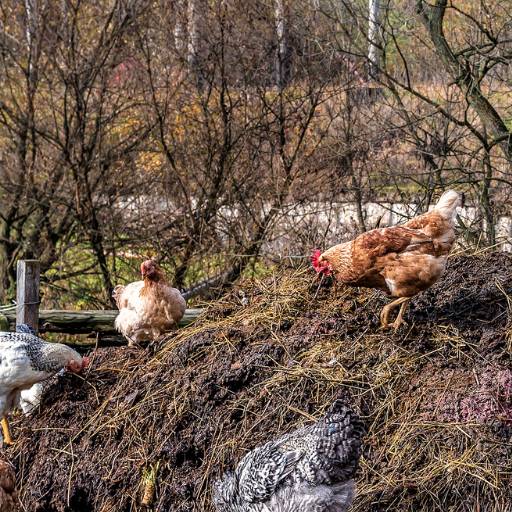
The collection of chicken manure calls for precautions if the nutrient value is to be retained and environmental pollution is avoided. One should begin by regularly cleaning the chicken coop to collect fresh manure that can be mixed with bedding materials, such as straw or wood shavings. The mixture should then be stored in a specific composting area or bin. It is important that this pile is turned periodically, thus assisting in quick decomposition and reducing bad odor. To ensure it is well kept, the compost must remain moist but not soggy and covered to save it from excessive rain. To prevent contamination by pathogens, composting needs to continue for at least six months before application, resulting in a fertilizer full of nutrients valued for plant use. Adequate storage prevents leaching of nutrients and minimizes water contamination.
Best Practices for Collecting Chicken Manure
Therefore, when we are collecting chicken droppings, we need methods that will produce high-quality material that can be used while preventing pollution at the same time. Therefore, it’s suggested that a regular cleaning schedule be implemented, especially before the accumulation of excess waste occurs. A clean up activity for chicken hut every 1-3 days ensures quick gathering of fresh dung. The most effective way of achieving this is by mixing carbonaceous bedding materials such as straw or sawdust with manure so as to achieve an ideal C/N ratio necessary for compost formation.
In addition, maintaining constant moisture levels within the compost heap is essential; the recommended content ranges from 40% to 60%. This could be tested using hand pressure; the compost ought to feel like a damp sponge, but no water comes out when squeezed hard. For efficient decomposition, aeration has also been identified as a crucial process; hence, piles need to be turned over every one or two weeks.
Similarly, proper selection of storage conditions is also important because both moisture saturation and drainage issues should be addressed. This may be accomplished by covering composting areas appropriately to prevent over-wetting through rainfall, which results to nutrient leaching. Moreover, the compost pile must be on a surface that water can drain quickly without getting logged. By following this, good compost will be produced for use as manure in improving soil fertility and the growth of plants.
Storing Chicken Manure Safely and Effectively
To store chicken droppings safely and effectively, methods that can help combat odor while reducing pathogens’ growth and preserving nutrients therein need to be used. Manure should first be covered and enclosed to reduce moisture content and prevent pests. It is useful to employ containers (made from drums or barrels) with lids since they help contain odors thereby preventing loss of essential elements through leaching. In terms of location, the storage area should be well-ventilated and situated away from water sources to avoid contamination.
Also, when the stored manure contains carbon-rich materials like straw or sawdust, maintaining an appropriate carbon-to-nitrogen ratio needed for decomposition becomes easier. At the same time, this helps break down the dung fast enough without causing any smells whatsoever.
Juxtapositionally, frequent checks for moisture content within the matter should also occur; it ought to have around 40 – 60% moisture content, just like one maintains the level of moisture in the preparation process of composts. Moisture levels can successfully be controlled through the use of tarps or other waterproof covers that are available for use hereunder. Lastly, allowing the manure to age for an extended period before use ensures that pathogens are reduced, thereby making manure safe for application as fertilizer. With these storage techniques, a high-quality compost rich in nutrients factor is developed leading to improved soil fertility and plant development.
Managing Smell and Disease Prevention
Several methods, including technical parameters, are recommended to manage smell better and control pathogens in chicken manure. First is using carbonaceous substrates such as straw or wood chips, which can substantially decrease odor by supporting aerobic decomposition, while foul smells primarily come from anaerobic conditions. The ideal C:N ratio for this purpose should be 25:1-30:1 to enable microorganisms have enough carbon to balance the nitrogen present in the manure.
Moreover, maintaining the correct moisture content is important; too much moisture will result in odor due to anaerobic conditions, while insufficient amounts hinder microbial activity. As mentioned above, it should be around 50% if it has to be optimized for optimal water content. This can be done by covering it with waterproof tarps and monitoring it closely over time.
Composting is mainly used for pathogen control, where a temperature range of 131°F (55°C)—158°F (70°C) is maintained for at least three consecutive days to ensure that pathogens are destroyed. It includes a thermophilic phase monitored using a compost thermometer so that these temperatures are maintained during the process.
Equally important, incorporating aerobic composting techniques like regular turning of the manure pile maintains oxygen levels necessary for minimizing odours and efficient killing of pathogens. Pathogens typically controlled through these methods include harmful bacteria such as Salmonella and E. coli.
In conclusion, this involves maintaining an appropriate C:N ratio, moisture content, and composting temperatures, as well as incorporating aerobic decomposition strategies to manage odor and pathogens present in chicken manure. By following these approaches, we can create an environment that will have minimal impact on odor production, thereby ensuring the effective reduction of pathogens and making the poultry litter safe and useful in agriculture.
How Do You Process Chicken Manure into Organic Fertilizer?
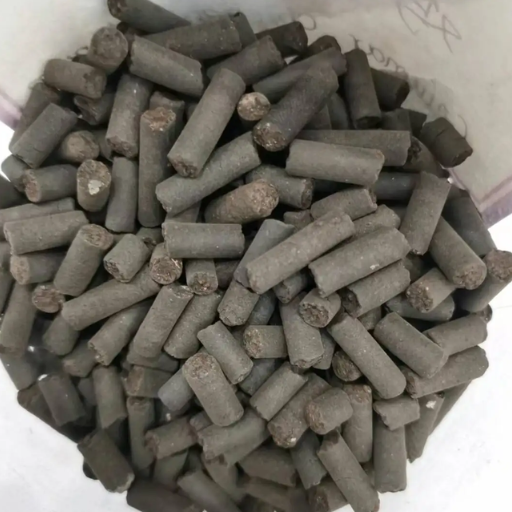
To make organic fertilizer from chicken waste, start by collecting new the manure and mix it with substances that are rich in carbon, such as straw, sawdust, or the leaves, so as to balance nitrogen content. A place should be designated for composting this mixture. About 130°F up to 150°F is the temperature that should reach inside the compost pile for at least a couple of days to destroy pathogens and weed seeds. Keep flipping the heap approximately every week or biweekly to expose it to oxygen to speed up the decomposition process and also avoid terrible smells. In general, it takes about six months through nine months for a composting activity to be completed, offering a final product that is dark brown in color, with droppings on the touch, and smells like soil. Once completely decomposed, the manure can then be spread onto vegetation and fields used for farming to enrich soils and encourage strong development of crops.
The Steps That Should Be Followed When Composting Manure
Start by gathering everything you may need, starting from fresh chicken droppings and any carbon source, e.g., straw, sawdust, or leaves. A proper ratio of dung to carbon substance ranges between one (1) part of manure per two (2) parts of carbon product so that there can be suitable nitrogen equilibrium, which is essential in an effective decomposition method. Lay down some carbon materials, followed by a layer of chicken dung, until you have a good height for your piled material.
Secondly, ensure that your compost’s temperature range falls within the 130°F-150°F range using a special device called a thermometer designed specifically for testing levels in plant or decaying matter piles like composts; this will ensure the destruction of weeds’ seeds along with pathogens residing inside them over several more days at minimum after reaching such temperatures inside them. Below these limits caused incomplete decomposition, while above, it reduced microbial action.
Thirdly, the compost heap should be turned over regularly every one to two weeks to allow oxygen to penetrate and stimulate aerobic microbial activity. This aeration step should guard against anaerobic situations that produce bad smells and slow down the decomposition process.
Fourthly, ensure that the moisture content is maintained at a level similar to that of a wrung-out sponge; this will encourage the activity of microbes thus disintegration process. If the pile becomes too dry, add water using a gardening hose pipe or protect it from excess rain by covering it with tarp.
Lastly, let this operation exist for six to nine months, making the material appear dark, crummy, and earthy-smelling. At that point, chicken excrements are already composted manure, which can now be spread on gardening beds or farm plots, enhancing soil structure and fertility and bestowing powerful life upon plants.
These steps outlined in detail enable the conversion of chicken wastes into nutrient-rich organic fertilizers containing essential macronutrients such as nitrogen (N), phosphorus (P), and potassium (K). This can promote sustainable agricultural practices.
The Techniques And Processes Of Fermentation
Fermentation is simply metabolism where sugar is converted into other forms like alcohol, acids or gas with bacteria/yeasts/fungi help. The basics of fermentation include a selection of microbial culture proper growth conditions sustaining the availability of food materials for the fermenting agents, among others. This includes temperature control, sterilization measures, and pH adjustments to prevent contamination. Start your fermentation procedure by inoculating your media with selected cultures, then follow these conditions while continuously monitoring environmental parameters suited for a particular fermentation stage. Such processes may differ when preparing products like brews, yogurt making, or fermenting vegetables, but principles behind microbial metabolisms and environmental constraints remain constant.
Metamorphosing Chicken Droppings into Fertilizer Pellets
To produce good pellets of chicken manure, a series of logical steps must be followed. Initially, the manure has to be composted or dried well to reduce the moisture content to about 15%, which is crucial in avoiding blockages and ensuring the smooth running of pelletizing machines. Then, the next step involves grinding it into fine powder when dry to get uniform pellet sizes.
This is then loaded into a pellet mill with dies having specific diameters ranging from around 2mm up to 12mm depending on the desired size of the pellets for agricultural use. The process also sterilizes the pellets by killing all potentially harmful bacteria present in them hence making them safe for use.
The idea behind this procedure is that soon after producing these materials, they should be cooled down and further dehydration as much as possible, targeting moisture contents less than 10%. This stage is important for improving storage stability and preventing microbial growth or pellet degradation afterward. When ready, these finished pellets can be packed up and stored in a cool dry place until needed for application on garden beds or farms.
How to Use Chicken Manure Fertilizer in Your Garden?
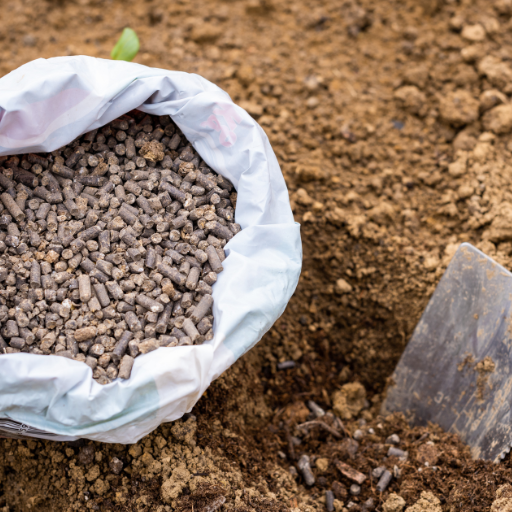
As a fertilizer, chicken manure is rich in nutrients that make it beneficial to garden plants when used properly. To avoid damaging the plants with high nitrogen levels, check that the manure is well-composted or pelletized. You can apply the manure by spreading it over the soil and maintaining an even rate of 20 pounds per 100 square feet across the soil surface. This should be done so that you can mix it in with the top two to three inches of your soil, either before planting or around established plants, but making sure not to come into contact with these stalks. Watering the soil after applying it will help release its nutrients and improve soil microbiological activity. The soil texture can also change by regularly applying chicken manure fertilizer, thereby increasing organic matter and improving growth rates and yields.
Composted Chicken Manure Application
Use these recommended instructions to apply your composted chicken manure effectively. Start by confirming that the compost has fully matured because immature compost may still contain pathogens and weed seeds. A darker crumbly texture and earthy smell are characteristics of good ripe compost, with C:N technical parameters indicating a carbon-to-nitrogen ratio (C:N) around 10-12:1.
When you spread your chickens’ compost on your gardens ensure you do this at about rates ranging from 20-30 pounds per hundred square feet across them surfaces uniformly. This rate best supplies balanced nutrients without saturating nitrogen into soils which may burn off plant roots.
On integration, work in this mixture down to about six inches below the ground level so that useful microorganisms can break it down more.
Application rates need adjustment according to specific crops because nutrient requirements vary among crops due to different needs; for example tomatoes and corn being heavy feeders require more than herbs which are light feeders. Monitor soil nutrient status by periodic tests on soils to determine if fertility is optimum and adjust compost applications accordingly.
It is also important to consider when to apply compost. Apply the composted manure in the fall to decompose over winter or in early spring before planting. This approach ensures nutrient availability when plants need it most. Composted chicken manure supplies nutrients such as nitrogen (N), phosphorus (P), and potassium (K), improves soil structure, enhances moisture retention, and strongly stimulates microbial activity.
Gardeners who follow these rules can increase their benefits from composted chicken manure thus making their gardens healthier and more productive.
Benefits of Chicken Manure Fertilizer Pellets
Chicken manure fertilizer pellets are a favorite choice for gardeners and farmers due to several advantages. They are rich in nutrients essential for plant growth, including Nitrogen (N), Phosphorus (P), and Potassium (K). In particular, chicken droppings have an N-P-K ratio of 3-2.5-1.5, providing a well-balanced nutrient profile that supports healthy root development, flowering, and fruiting.
From a technical perspective, these pellets are made using composting followed by pelletization. Composting is necessary as it eliminates harmful pathogens while stabilizing the manure. On the other hand, pelletizing makes the fertilizer user-friendly and, hence, easy to apply with minimal cases of over-application and nutrient runoff from the gardens or fields where it is used. These pellets also slowly release nutrients into soils, thereby keeping them supplied with food regularly, which reduces unnecessary application periods.
Moreover, chicken manure pellets increase organic matter and improve soil structure quality. This means soil aeration, water infiltration, and moisture retention will be increased, resulting in more microbial activities that are essential for soil ecosystems. These chicken manure pellets are environmentally friendly as they can recycle waste into useful substances and reduce reliance on synthetic fertilizers.
An integrated approach to using chicken manure fertilizer pellets promotes sustainable agriculture practices in productive and healthy gardens or farms. The various merits their inclusive nutrient content offers and its easy application process make chicken manure pellets superior to other methods used in managing soil fertility.
Safety Precautions When Using Fresh Chicken Manure
Some safety precautions have to be taken while using fresh chicken manure so as not to affect plants or cause any health hazards. One important step that should be taken is aging or composting fresh manure before it is applied; this should take at least six months. Such a process helps kill pathogens like Salmonella and E.coli, which could get into the plants and pose risks if ingested by humans. It’s also advisable to wear gloves and masks when handling fresh cow dung to avoid direct exposure to skin contact or inhalation of dust particles. Applying fresh cow dung directly onto leafy greens and root crops should be avoided since they are consumed raw thus easily carrying contaminants up the food chain. Furthermore, cow dung should be applied much earlier before planting season so there will be enough time for its decomposition with no harm to plant roots due to burning effects caused by nitrogen sources present in dung material during rotting stages. Properly spacing applications for optimal decomposition is key to maintaining soil health and ensuring a safe gardening or farming environment.
What Are Common Challenges in Making Organic Fertilizer from Chicken Manure?
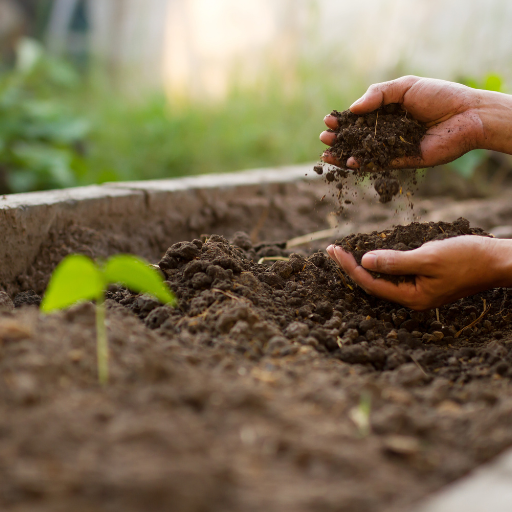
Producing organic fertilizer from chicken dung presents several challenges. One major issue is ensuring that the manure undergoes enough composting for any harmful pathogens such as Salmonella and E. coli to be done away with completely, which can lead to soil and crop contamination. Another challenge is dealing with the high nitrogen content in fresh chicken droppings, which can burn plant roots unless properly aged or composted. Composting also requires frequent checks on temperature, moisture, and oxygen levels for optimal decomposition. In addition, the logistics of moving large volumes of raw manure are another problem; this includes storage and odor control. Finally, getting the right mix without using chemicals often involves careful management and adjustment by many farmers and gardeners, complicating the process.
Managing Nitrogen Levels
- Composting Chicken Manure: Composting chicken manure effectively manages its nitrogen levels. This process requires maintaining a constant temperature between 131°F and 170°F for at least two weeks while turning the pile every other day to evenly decompose it. This will reduce excessive nitrogen and eliminate any disease-causing organisms.
- Curing Period: Nitrogen further stabilizes when the composted chicken manure is allowed to cure for an additional two to four months after the composting stage is completed. This curing period ensures that all residual nitrogenous compounds are broken down.
- Carbon to Nitrogen Ratio (C:N Ratio): It is important to achieve an optimal C:N ratio because a typical recommendation is a ratio of 25:1-30:1.This balance can be achieved by mixing high-carbon materials like straw or wood shavings with chicken droppings rich in nitrogen. For example, one part chicken droppings plus two parts high-carbon material will give you this ideal ratio.
- Moisture Control: Proper moisture levels of between 40% and 60% should be maintained while composting to attain the best microbial activity necessary for nitrogen stabilization. Extremely dry or wet conditions hinder the process of composting.
- Regular Testing: Nitrogen in organic manure can be monitored through soil analysis carried out periodically. The test gives insights into nitrogen content in organic fertilizers, hence acting as a basis for adjusting accordingly. For accurate results, farmers should follow guidelines given by local agricultural extension officers.
Preventing Overfertilization
Monitoring soil nitrogen is important to avoid overfertilization. Firstly, regular soil testing helps determine available nutrients and adjust fertilizer application rates accordingly. This action minimizes the risk of groundwater nitrate contamination. Also, incorporating organic matter into the soil enhances nutrient-holding capacity, thus reducing the possibility of excessive nitrogen accumulation. Another method is using a fertilizer that releases nutrients slowly to align with plant uptake, thereby avoiding overfertilization. An alternative way to manage nitrogen within soils is through crop rotation and cover crops that naturally replenish soil nutrients and build better structures around it.
How Sustainable is Fertilizer Production from Chicken Manure?
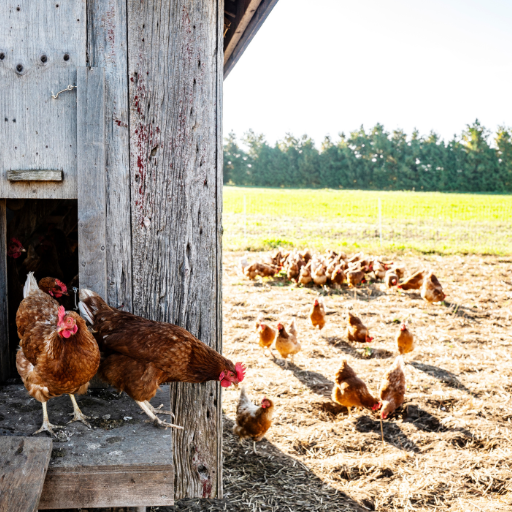
Chicken manure fertilizer production is deemed sustainable due to several reasons. Firstly, it is based on renewable resources and converts waste into valuable organic fertilizer, hence minimizing pollution resulting from the environment. These processes involve composting the manure which greatly reduces pathogens and odors. This fertilizer optimizes the fertility of the soil by offering nitrogen, phosphorous, and potassium in a slow-release form that supports plant growth for an extended duration while discouraging nutrient leaching. Furthermore, using chicken manure as a fertilizer encourages a circular economy within agricultural systems, thereby reducing the dependence on synthetic fertilizers and making farming more sustainable.
Environmental Impact of Poultry Manure
Poultry manure has far-reaching environmental impacts from its nutrient content and management practices. Nutrient runoff, particularly nitrogen and phosphorus, can cause water pollution and eutrophication of water bodies if poultry manure is not well-managed. Ammonia emissions released during decomposition pollute air, thus posing health risks to people and causing environmental harm. Moreover, improper storage and treatment of poultry meat leads to methane emissions, thus adding to greenhouse gas effects. Conversely, when properly managed, poultry manure can be used as a good source of nutrients for crops that enhance soil health and promote sustainable agriculture.
Advantages of Organic Fertilizer Over Chemical Fertilizers
There are several advantages associated with organic fertilizers as compared to chemical fertilizers, especially in long-term soil performance & sustainability. One such benefit is that it improves the structure of soil by introducing organic matter into it through the application of organic fertilizers obtained from composts made out of animal dung or any other natural material available in large quantities near farms or any other disposal system nearer city centers as scavenged from local dumps or market rejects like off-spec veggies unfit for human consumption among others. It helps enhance water retention, improves aeration rate, and increases microbial activity level, facilitating healthier root systems where plants grow more robustly.
Organic fertilizers also release nutrients into the soil slower and steadier than chemical fertilizers do. For example, nitrogen in organic fertilizers is usually in an organic form that soil microorganisms must first mineralize before plants can take up (Nelson et al., 2014). Such a slow nutrient release mechanism reduces the risk of leaching and environmental contamination while ensuring that plants receive a constant nutrient supply, leading to their better development and increased yields.
Another key advantage is the low risk of buildup or soil toxicity due to chemicals. Excessive use of chemical fertilizers may lead to the accumulation of salts and other toxicants within the soils, which can disrupt plant growth and affect the activities of soil microorganisms. Conversely, many organic fertilizers lack synthetic chemicals or heavy metals associated with them, thus making them safe for long-term soil health.
On a sustainable note, organic fertilizer utilization aids in fostering sustainable agriculture by enabling the organic recycling of waste materials. This minimizes dependence on finite mineral resources, reducing carbon footprints from synthetic fertilizer production. Organic fertilizers often require less energy during production and application than those used in conventional farming systems, thus contributing further to environmental conservation.
Reference sources
- ScienceDirect
- Source: A Review on Treatment Processes of Chicken Manure
- Summary: This review article examines various treatment processes for chicken manure, highlighting its potential to generate value-added products such as compost. The study underscores the benefits of composting chicken manure into a high-quality organic fertilizer.
- Organic Fertilizer Machine
- Source: Feasibility Analysis on the Establishment of New Organic Fertilizer Production Plant
- Summary: This report provides a comprehensive analysis of the technical, environmental, and economic feasibility of establishing a new organic fertilizer production plant in the United States, with a significant focus on utilizing chicken manure as a primary input.
- NCBI
- Source: How Safe is Chicken Litter for Land Application as an Organic Fertilizer?
- Summary: This article explores the safety and environmental benefits of using chicken litter as an organic fertilizer, presenting it as an economical and sustainable method for disposing of large volumes of poultry waste while enhancing soil fertility.
Frequently Asked Questions (FAQs)
Q: What is chicken manure organic fertilizer?
A: Chicken manure organic fertilizer is an eco-friendly, nutrient-rich soil amendment made from processed chicken waste. It is effective at enhancing soil fertility and supporting plant growth.
Q: How is chicken manure processed into organic fertilizer?
A: Chicken manure undergoes a series of steps including collection, composting, granulation, and drying. These processes convert raw material into a stable, nutrient-rich organic fertilizer suitable for agricultural use.
Q: What are the benefits of using chicken manure organic fertilizer?
A: Chicken manure organic fertilizer enriches the soil with nutrients like nitrogen, phosphorus, and potassium, enhances soil structure, improves water retention, and promotes the growth of beneficial microorganisms in the soil.
Q: Can fresh chicken dung be used directly as fertilizer?
A: Fresh chicken dung is not recommended for direct use as it can be too strong and potentially harmful to plants. Proper composting or processing is needed to stabilize the nutrients and eliminate any pathogens before use.
Q: Are there any environmental impacts of using chicken manure organic fertilizer?
A: Using chicken manure organic fertilizer can positively impact the environment by recycling waste, reducing landfill load, and providing an alternative to synthetic fertilizers. However, manure without proper processing can lead to nutrient runoff and pollution, so appropriate handling is crucial.
Q: How does granulation process improve chicken manure organic fertilizer?
A: Granulation transforms loose chicken manure into uniform, easy-to-handle granules, enhancing the storage, application, and effectiveness of the fertilizer. It also minimizes dust and reduces nutrient loss during handling and transportation.
Q: Why is fertilizer fermentation important in the production process?
A: Fertilizer fermentation is crucial as it decomposes the organic matter in chicken waste, reducing odor, eliminating pathogens, and stabilizing nutrients. This process ensures that the final product is safe, effective, and beneficial for soil and plants.






